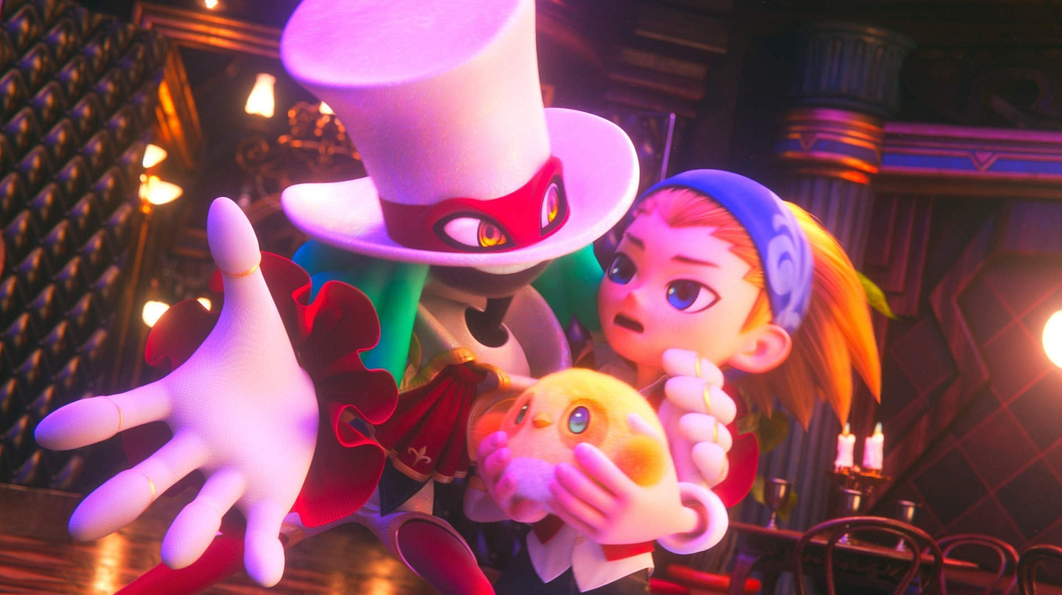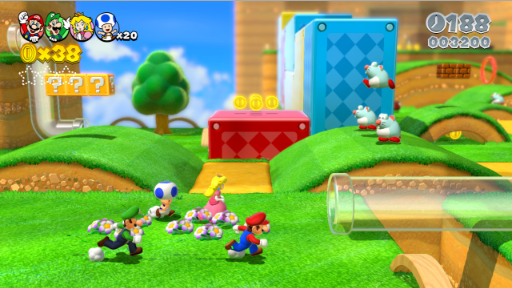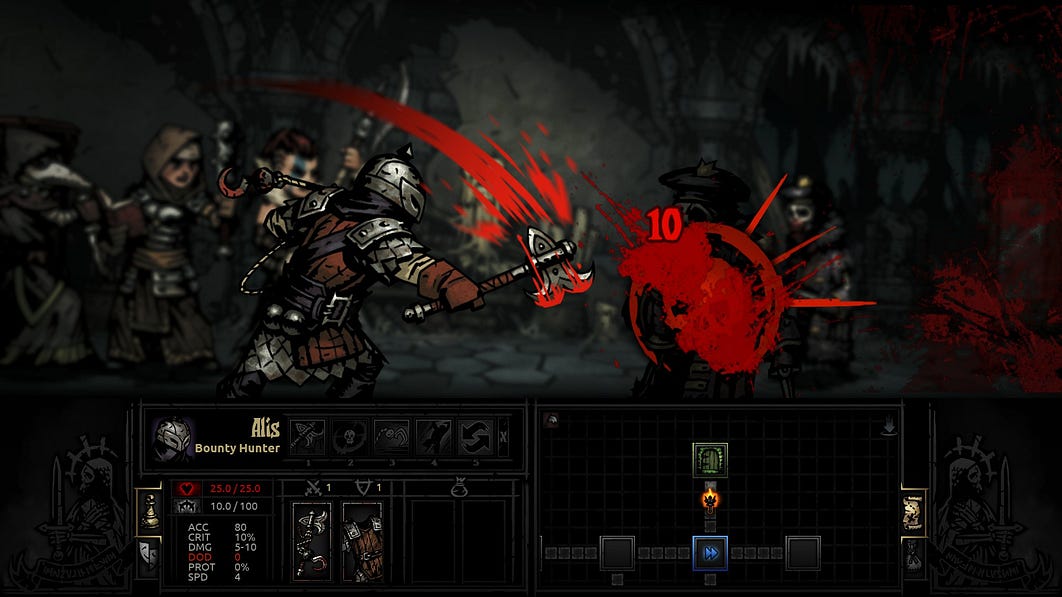The following blog post, unless otherwise noted, was written by a member of Gamasutras community.
The thoughts and opinions expressed are those of the writer and not Gamasutra or its parent company.

The recent announcement over the failure of Balan Wonderworld and the possible retirement of Yuji Naka has made me think more about the structure of gameplay and game design. I haven’t played the game yet, but watching footage and hearing impressions about it, and I could not imagine that game being a success in today’s market, which raises a big question: Why was it designed that way? Yuji Naka joins a surprisingly long list of developers who were in the AAA or AA space that could not bounce back with new games following the ones that made them a success. I don’t think for a second that Yuji Naka doesn’t understand videogames but comprehending the fundamentals of game design goes beyond just making videogames, even award-winning ones, and why it is becoming increasingly important to understand them.
Game Design vs. Game Development
Yet another popular argument when it comes to game dev discussions is who is a part of a game’s development — is it everyone on the team, just the leads, just the designer, etc. When it comes to the actual development and production of a game, anyone on the project — from interns all the way up to the leads — is part of the development team.
However, game design is its own unique beast and still underappreciated and not understood by enough people in my opinion. There’s going to be several shots fired at the industry in this post and here’s the first one: game design is not the same as game development; it doesn’t matter if you coded the entire game from scratch on your own custom engine, that alone does not make you a game designer.
You need to be actively coming up with the core gameplay loop, thinking about progression and mechanics/systems, creating the UI/UX (User Interface/User Experience), and building content that makes use of all that, those are the elements of game design and the role of a game designer. I have said this countless times, I’ve reached a point where I can spot within minutes whether or not a game has a chance at succeeding, and part of that is being able to tell if the developer understands game design. Even though it can be hard to put it into words, consumers can tell very quickly if a game they’re playing is enjoyable or not and will either keep or stop playing because of it.
Just because someone plays a ton of videogames, goes to school to get a degree in game development, or even works at a game studio does not automatically mean that they understand the philosophy and fundamentals of game design.
The Fundamentals of Game Design
It’s time for shot #2 — whether developers want to admit it or not, there are standards of game design. I have spoken a lot about the art and science of games, and most developers tend to focus on “the art”, but what often separates good and bad design, and successes from failures, is the science behind them. There is obviously more to a successful game than just design, such as marketing, but this post is focusing exclusively on the design side. Take platformers as an example, it is arguably the genre with the most entries in it as well as being the popular template for entry-level design.
I have hit a jump button and watched a character go up into the air more times than I can count, it was even the subject of my first formal game design book. Not only making the “jump button” work but making it enjoyable to do is exponentially more difficult than it sounds. Just that one simple act I have seen developers mess up, and when you mess up the core gameplay loop of your game, all the story, art, and aesthetics you put into it are going to go down with the ship.

I have spoken about the whole debacle behind “Bioware Magic” in the past and the failure of Anthem, and even prominent, top-of-the-class, game studios can still fail if they don’t understand gameplay and design. Returning to Balan Wonderworld, one of the red flags I saw with the design was the inclusion of a power that randomly takes away your ability to control your character. Control is essential in any platformer and taking that away would be akin to designing a car with randomized brake and gas pedals.
If your game is only going to be about pressing one button, then that one button press needs to always be amazing. There is a reason why we call it a core gameplay loop, that is the heart and foundation of your game. Any problems with it will spread to all corners of your game; even those where the story is supposed to be the primary reason for playing.
Every game genre has foundational elements that are standard to it that must be on point or the whole experience breaks down. As a designer, part of your job is doing the research on whatever genre you’re working in to find and comprehend those elements. Some people will misconstrue that and think I’m talking about having to master a game or play it at the professional level. What I mean is that you should be able to identify the following:
- What is good about this genre?
- What is bad about this genre?
- Why are people playing this genre?
This is also why developers who completely switch genres when creating different games can often find themselves lost. Building an amazing platformer does not translate to making RPGs in the same way that a doctor of one specialty could automatically switch to another. In a post I wrote about indie developers, I said that while many indie teams lack the resources to make something of the same quality as AAA studios, they often make amazing gameplay better than or equal to professionals at major studios. And the reason is that they understand what good game design is for that genre. Getting “the feel” of a game right requires an intimate knowledge of the gameplay and of that genre; it’s not something you can just go to school for or even just play tons of games. You need to be able to analyze game design, and that is a tough skill to quantify.
There is another expression that I have heard and spoke about — “in order to break the rules, you need to understand them first.” There is a massive difference between a designer creating an unconventional game in a genre that they have no experience in vs. knowing that genre inside and out and building something contrarian to it.
Enthusiasts vs. Professional Game Designers
Part of the reason why there aren’t discussions about standards or establish rules is that it can conflict with the creative process. At the end of the day, the game industry is an artistic industry, hence why developers focus on the art side.
However, what separates those who succeed from those that don’t is an understanding of the business side. There is more to being successful in this industry than making video games as I talked about earlier. And that takes me to the third and final shot for this piece: If you want to succeed in the game industry, you can’t just make what you want to play.
A key differentiator between an enthusiast and a professional in the gamedev space is what they are trying to achieve with their titles. If all you care about is making a game and have no intention or want for earning an income through it, you can disregard everything that I’m talking about. Developers who do turn their games and design into a business understand that at the end of the day, if they’re not making something that consumers want to play, then they’re not going to last in the industry.
Part of that understanding is that no game exists in a vacuum — if you ignore (or don’t know) the marketing points and trends of a genre, you can end up with a game that doesn’t appeal to anyone in the market you’re trying to reach. Worse still, you may create a game at a quality far below the rest of the market, almost guaranteeing that people aren’t going to buy your game. There is a big reason why I harp on UI/UX because those elements are a hallmark of a great designer. Conversely, UI/UX is often the area where new developers mess up primarily due to not understanding the market beyond themselves and the people they showed the game to.

Returning to Balan Wonderworld, I feel like AAA developers and members of the industry who do move into the indie space are learning two harsh lessons — their name and clout don’t mean much to the consumer and you can’t design a game in the same way at a AAA studio when you are an indie. Consumers don’t care about your name or what projects you worked on previously, they care about the game they’re looking at now.
Building from that, if your new game is just like the one you made at your previous job, most likely it’s going to fail, and I know that sounds very weird to say. The reason is that as an indie, there is no way you’re going to approach the same level of quality and size that you were able to do with the backing of a major studio. Part of the appeal of AAA fandom is the brand loyalty — from Blizzard to Nintendo and everyone in-between, studios that have been around long enough have fans who will buy their games not only because they’re huge fans of the genre, but because they are huge fans of the developer and want to support them. And that fandom will often blind them to issues or design flaws with their favorite games, something they’ll have no trouble finding fault with when it comes from a smaller studio.
There’s a reason why I reference Redhook Games and Darkest Dungeon whenever I talk about indie game successes, it’s because they are one of the best examples of it. When I look at the credits of Chris Bourassa and Tyler Sigman (the cofounders) when they formed Redhook, they didn’t decide to just remake one of the games they worked on previously but used their experience in game dev to make something new.
The Science Side of Game Design
In one of my talks I present at schools and libraries, I discuss whether there is a role in the game industry for someone who focuses only on game design, not on aesthetics or programming. While some of you will probably joke and say that I’m just talking about “an idea man,” I do believe that game design should be its own established craft and study.
This is part of the reason why I started Game-Wisdom and why I also offer to consult on games. The problems that I see with a game’s design aren’t mysterious, hard to explain, and sadly, not that hard to find when you know what to look for. The game industry is over 40 years old now, we are past the point of everything being new or having to invent new concepts for our industry. Trying to design a game without understanding game design isn’t putting the cart before the horse, it’s standing there with groceries and wondering what can help move all this stuff.
What aspects of game design do you think are important and worthy of being studied, and any ideas on how to analyze them? Let me know in the comments.
If you enjoyed my post, consider joining the Game-Wisdom discord channel open to everyone.

